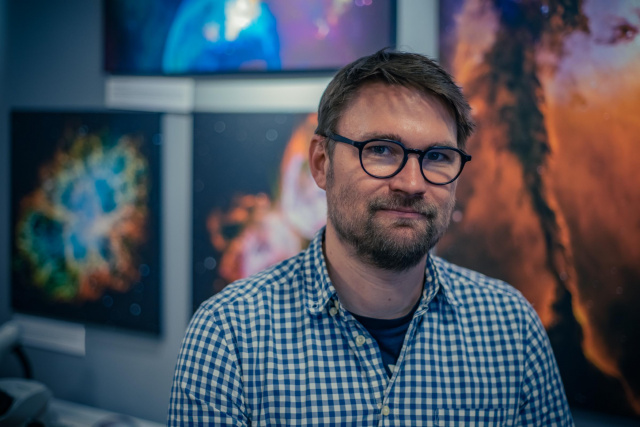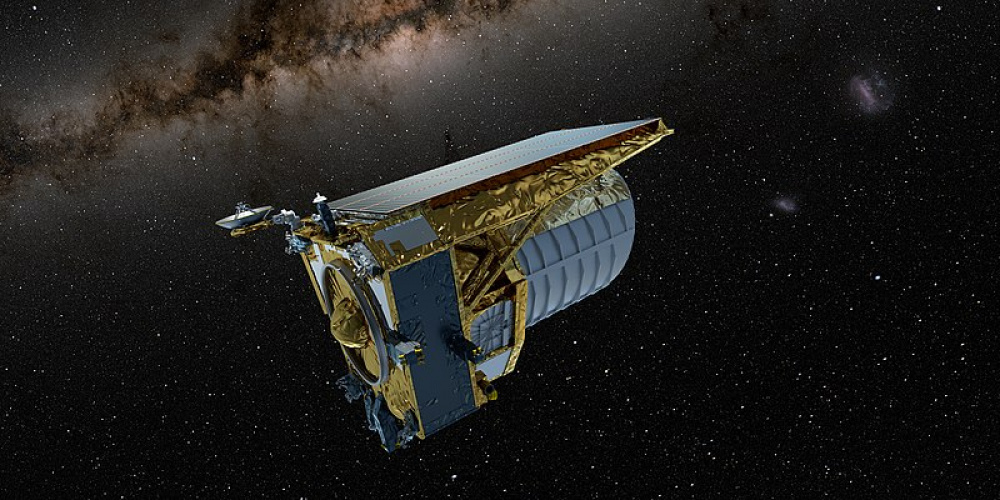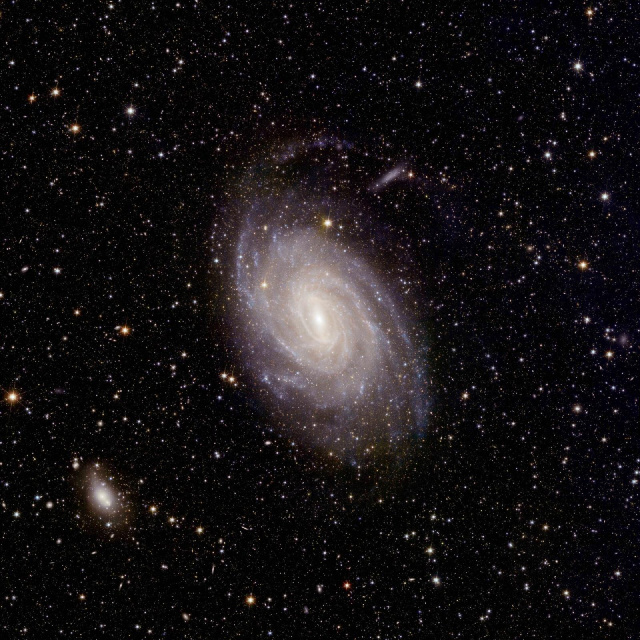MTA’s Momentum Group on the trail of dark matter
The European Space Agency recently released the first spectacular images taken by the Euclid space telescope, demonstrating the unparalleled capabilities of the new telescope. The data collected by Euclid will be analysed over the coming years by an international consortium of thousands of researchers. This consortium includes members of the MTA-CSFK Lendület (Momentum) Large-Scale Structure Research Group, led by András Kovács of the Research Centre for Astronomy and Earth Sciences (CSFK) at HUN-REN.
The Euclid collaboration is a huge project involving about 2,000 scientists and engineers, mainly from the European Space Agency (ESA) member countries, which has been more than a decade in the making. It aims to create, in collaboration with other space agencies, the most detailed map of the universe ever made. By the end of the six-year project, it is expected to have produced a three-dimensional map of the universe, or, more precisely, the clearest third of the sky, consisting of roughly a billion galaxies.
“The ultimate scientific goal of the Euclid collaboration is
to understand the two most mysterious components of the universe, dark matter and dark energy,”
says Kovács. “They are called dark precisely because they are very difficult to study directly. We can infer their presence and their effects from the distribution of visible matter as well as the shape of and the clustering of galaxies.”
 András Kovács Photo: Vilmos Steinmann
András Kovács Photo: Vilmos Steinmann The basic idea of the Euclid project is that the bigger the map of the visible universe and the further we look in the universe, the better we can map the evolutionary history of the universe. As the universe has been expanding since the Big Bang, the further out in space we look, the further back in time we can look (as distant celestial bodies are seen in their previous state, even billions of years ago). “Along these cosmic onion skins, we can actually read the evolution of the universe from the three-dimensional map we have created,” says Kovács.
“For example, in the Euclid collaboration, we want to understand when dark energy, which we think makes up about seventy percent of the universe today, became the dominant component.”
The Euclid space telescope, launched on 1 July last year, is currently undergoing test operations, and the incredible quality of the images of known objects is proving to its supporters and the public that it is not just a working instrument, but an examination tool that could open a new era in our understanding of the most fundamental properties of the universe.
 Artist impression of the Euclid mission in space Photo: ESA
Artist impression of the Euclid mission in space Photo: ESAAccording to Kovács, there are two different detectors on board the Euclid space telescope (partly because the final instrument was assembled by ESA around 2011 from two smaller competing projects), one of which makes observations in the visible light range and takes exceptionally sharp photographs of the universe. This gives us a very detailed view of galaxies and stars, but only an approximate estimate of the third dimension, the distance to celestial bodies. The other piece of equipment is an infrared detector, which can also perform spectroscopy. This means that it can also look at the redshift of galaxies, which gives a much more accurate estimate of their distance. The three-dimensional mapping aspect of the project is therefore mainly based on measurements from this instrument.
Following its launch into space on 1 July last year with SpaceX, Euclid took about a month to reach Lagrange Point 2 (Editor’s note: where the gravitational pull of two orbiting bodies counterbalance each other) in the solar system, where it took up residence with the Gaia space telescope and the James Webb Space Telescope. Here, with minimal manoeuvring, it can be held in place and used for stable observations. There were problems in the early weeks, for example, certain small components were excessively bright, so that even minimal sunlight reflected off them and into the detectors, disturbing the calibration of the instruments. The increased cosmic radiation (i.e. the flux of high-energy particles) from increased solar activity also left its mark on Euclid’s images. Since very bright stars are usually used to position the telescope, the cosmic particles that “outshine” these stars also caused the telescope to move in a wobbly motion, which spoiled the observations. This could be remedied with a software solution and led to the images of the early observation programme that have now been made public.
In parallel, a systematic sky survey has been ongoing since February this year and will be completed in six years.
It was not easy for the Hungarian team to join this international collaboration. “I founded our Momentum (Lendület) research group as a member of the Euclid collaboration. But in order to involve the rest of the research team in this collaboration, we had to put not only CSFK but the whole of Hungary on the Euclid map,” said Kovács. “For this, we had to find a role for the members of the research group that Euclid really needed. This is how our colleagues took on the management of the collaboration’s science communication programme, drawing on the expertise of the Svábhegy Observatory staff. This means both facilitating the flow of information between the two-thousand members and communicating scientific results to the outside world.”
 Euclid’s new image of spiral galaxy NGC 6744
Euclid’s new image of spiral galaxy NGC 6744Photo: ESA
Kovács joined the Euclid programme seven years ago, in connection with his former postdoctoral position in Barcelona. Since then, he has mainly been studying the clustering of galaxies using statistical methods. This has led to the research area of the Lendület group: they study the “big nothing”. These parts of space, called cosmic voids, are located between galaxies; they are up to one billion light years across and there is almost nothing visible in them.
“The existence of dark energy is perhaps the biggest and most mysterious question in cosmology, and we suspect that it is a property of empty space,” argues the team leader. “It is as if there is some cosmic repulsive force in empty space that is pushing galaxies apart, stretching the universe. Where else could we look for it most directly than in such voids, where, in the absence of visible and dark matter, there is relatively more dark energy?” The research team has studied these structures in previous sky survey programmes, but
the Euclid collaboration is producing a much more detailed three-dimensional map of the distribution of galaxies than before.
We can therefore expect the results of these dynamic Hungarian researchers to increase in the near future.
